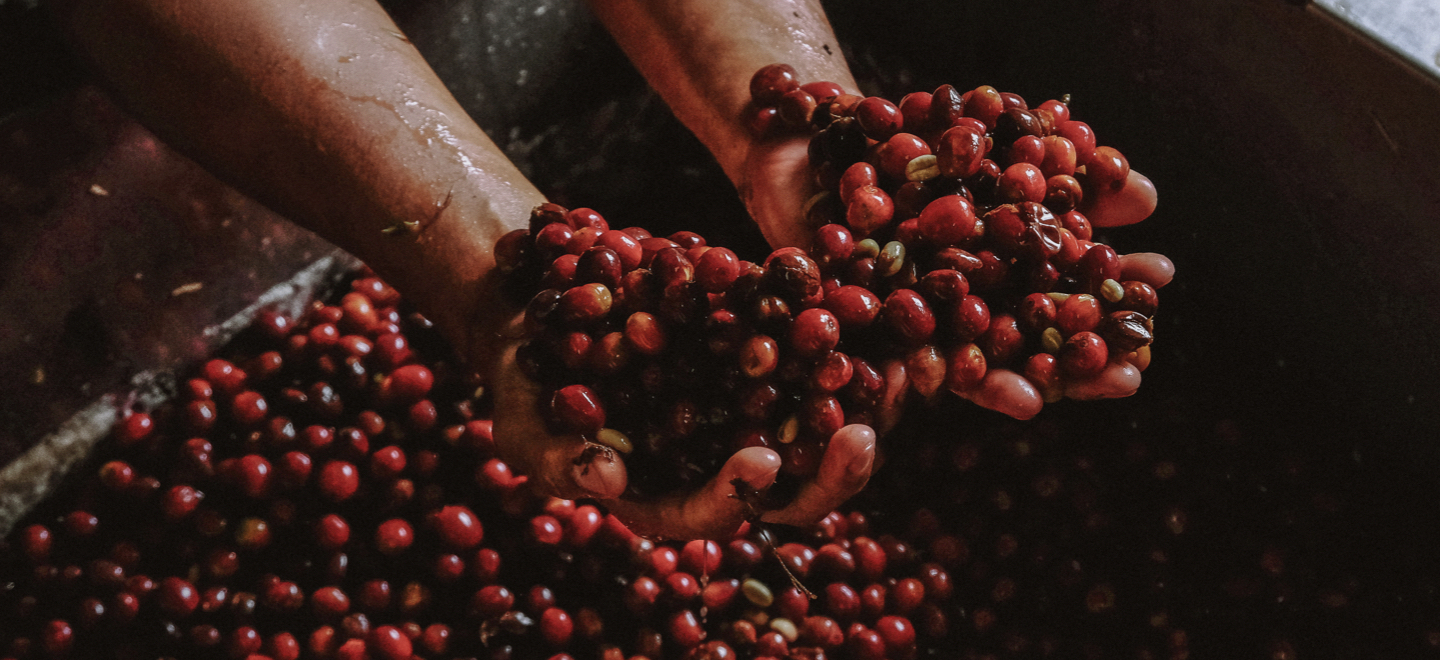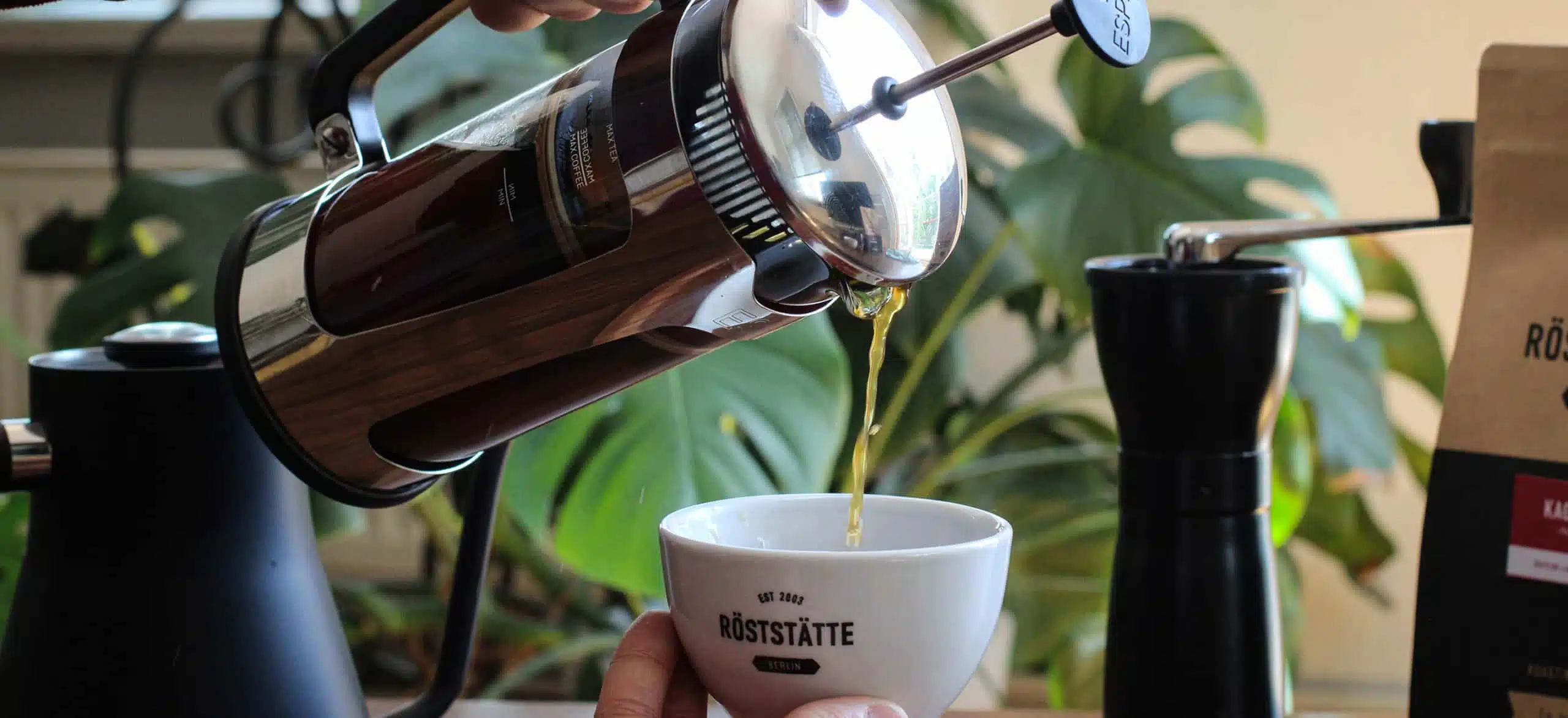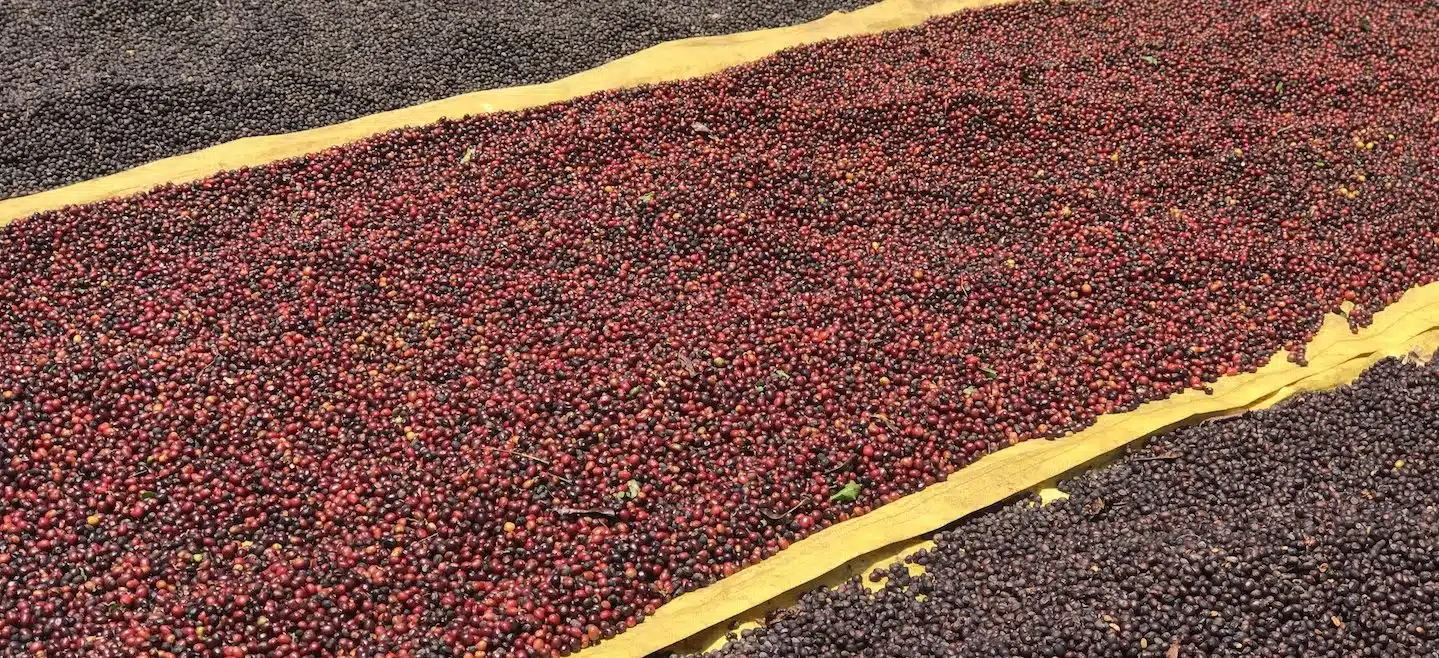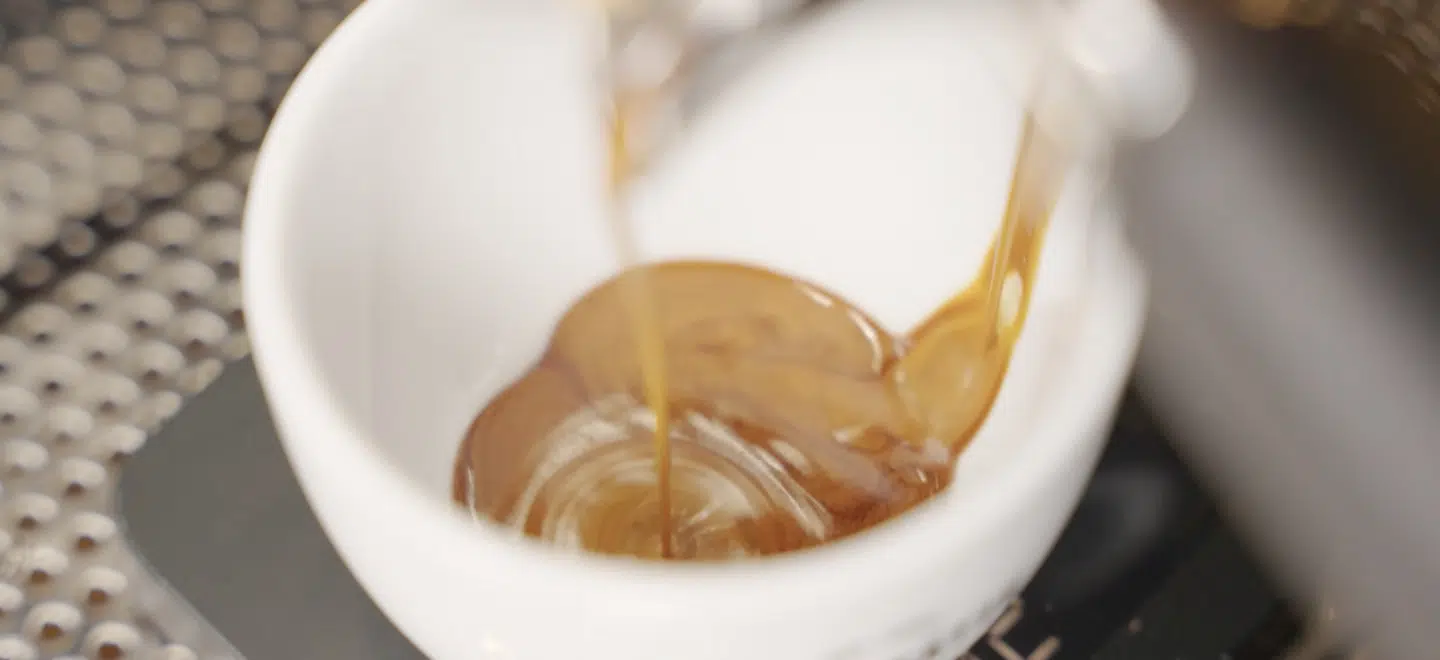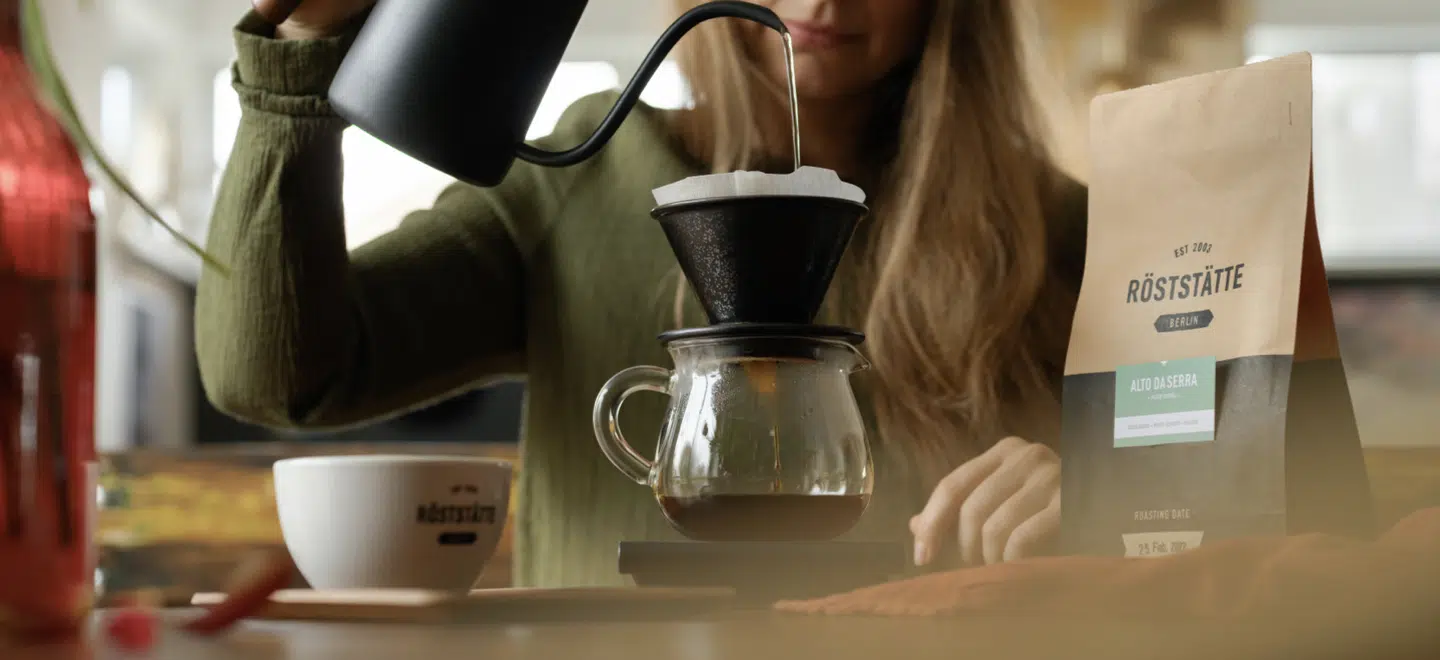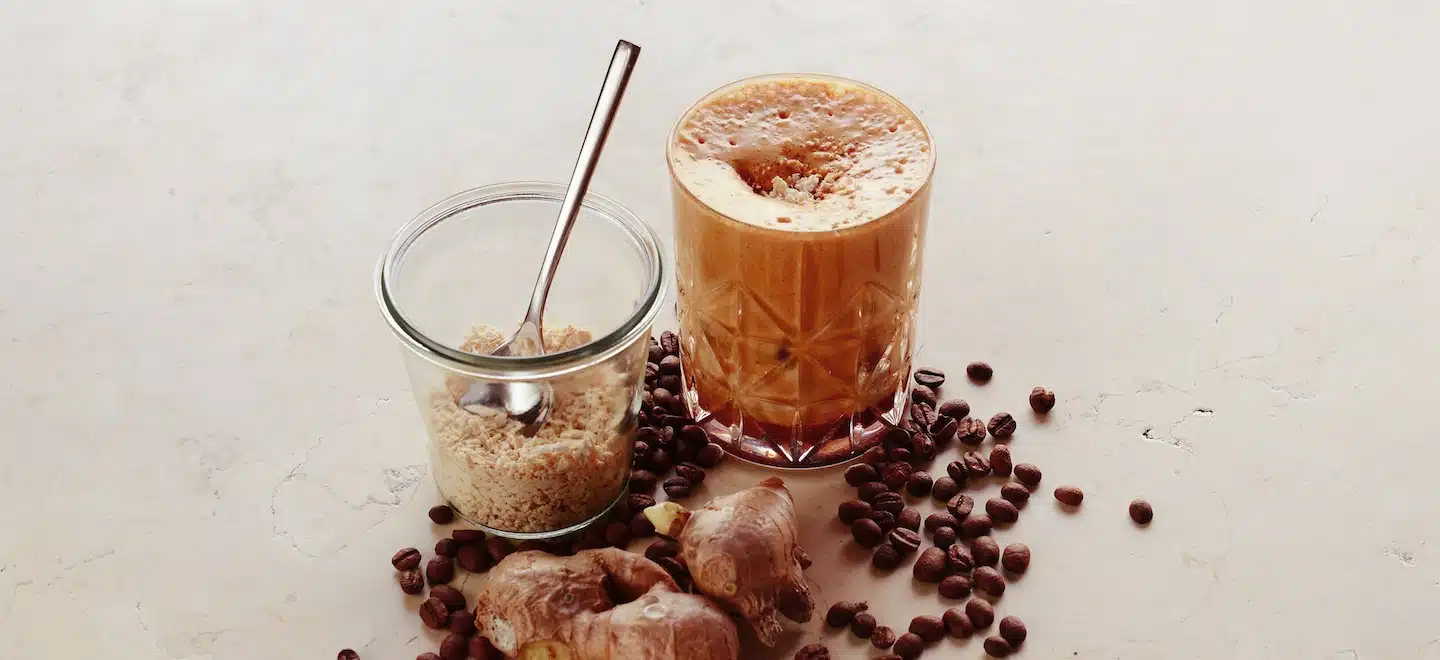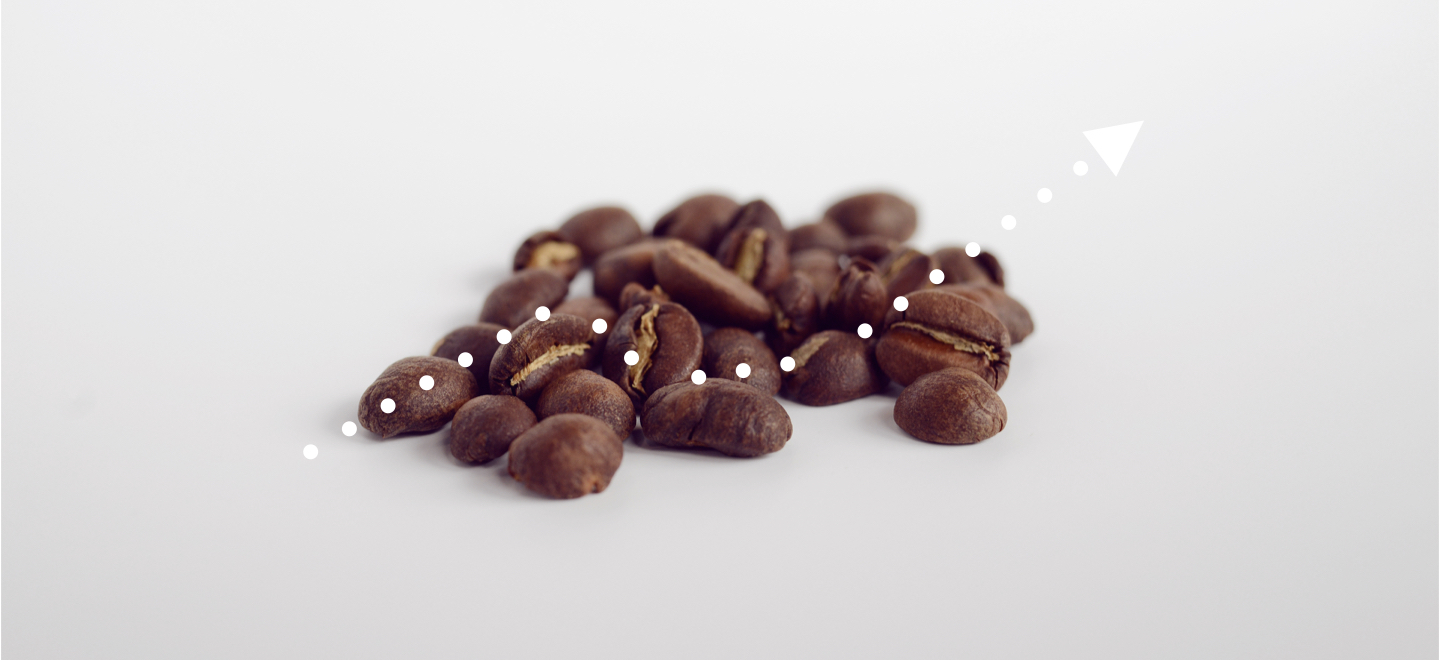The great milk alternatives test
The coffee shops of this world are becoming more and more creative and diverse when it comes to offering their customers unique coffee specialities. The question "coffee with milk or without milk?" is no longer asked, but rather "which" milk should it be?
Whether soy, oat, almond or now pea "milk" - the list of alternative milk products is endless. We wanted to find out for you whether they all harmonise with the taste of coffee and ultimately taste good. For our milk alternatives test, we have put together a selection of 6 different vegan alternatives that are usually offered in cafés and in the shops.
Fact: Did you know? According to EU regulations from 1987, milk alternatives such as oats or soy cannot officially be called "milk" in order to protect the marketing of milk or milk products. Nevertheless, we decided to call the plant-based drinks that for this test.
Fact: Did you know? According to EU regulations from 1987, milk alternatives such as oats or soy cannot officially be called "milk" in order to protect the marketing of milk or milk products. Nevertheless, we decided to call the plant-based drinks that for this test.
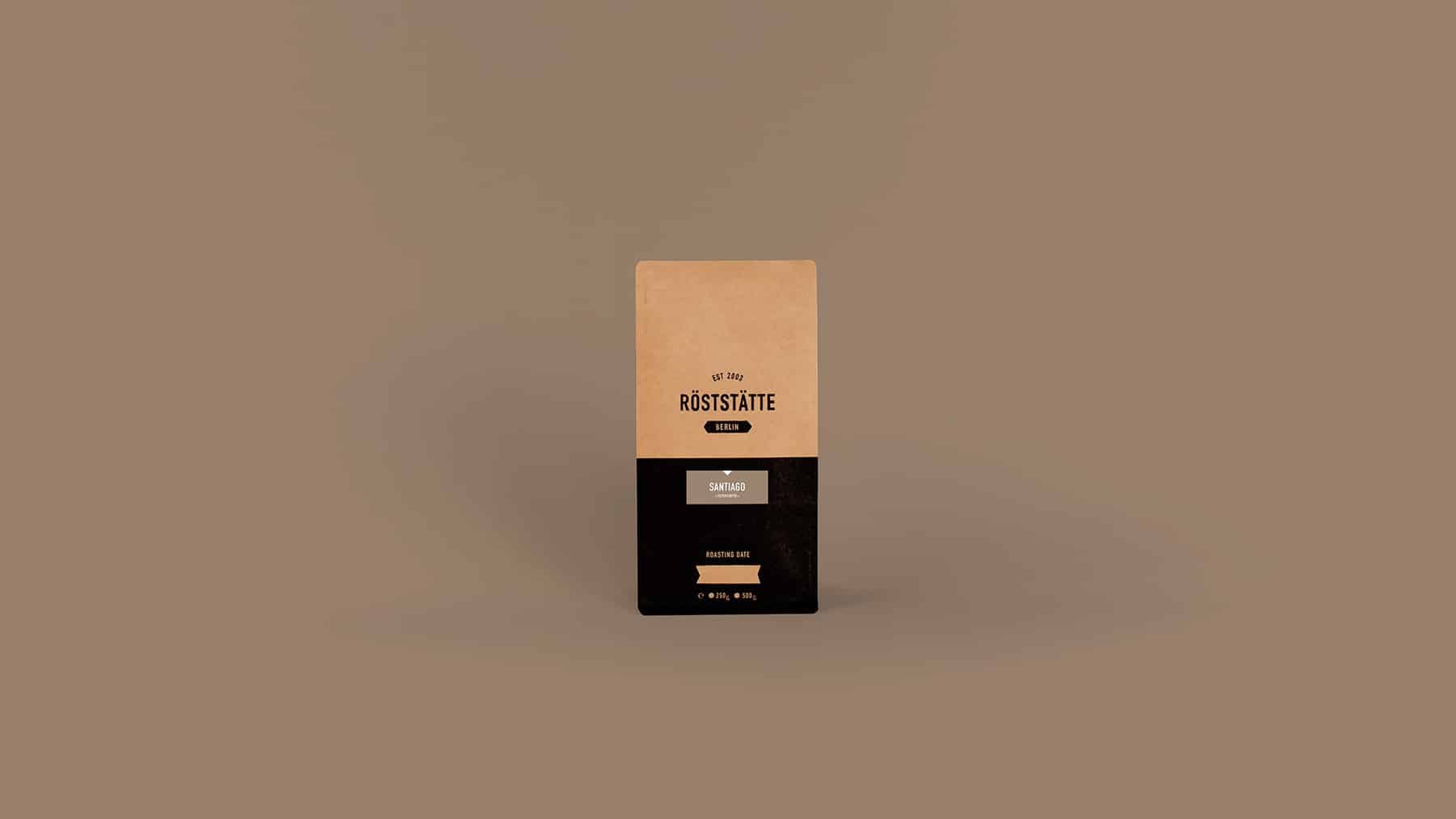
The espresso
For the test, we used our Single Origin from Brazil, the Santiago Espresso. This tastes very caramel, chocolatey, slightly nutty and harmonises very nicely with milk. In order to check the quality of the milk and to be able to optimally evaluate the coffee-milk ratio, we prepared all drinks as cappuccinos.
The rating criteria
For the test, we chose 6 different milk alternatives:
Soy / almond / oat / coconut / rice / pea protein.
As evaluation criteria we have chosen:
Taste (1 - 5 )
Foamability (1 - 5 )
Consistency (1 / watery - 5 / creamy)
Coffee-milk ratio: Which tastes more present? (1 / milk - 5 / coffee)
Scale:
1 poor - 2 poor - 3 okay - 4 good - 5 very good
Soy / almond / oat / coconut / rice / pea protein.
As evaluation criteria we have chosen:
Taste (1 - 5 )
Foamability (1 - 5 )
Consistency (1 / watery - 5 / creamy)
Coffee-milk ratio: Which tastes more present? (1 / milk - 5 / coffee)
Scale:
1 poor - 2 poor - 3 okay - 4 good - 5 very good
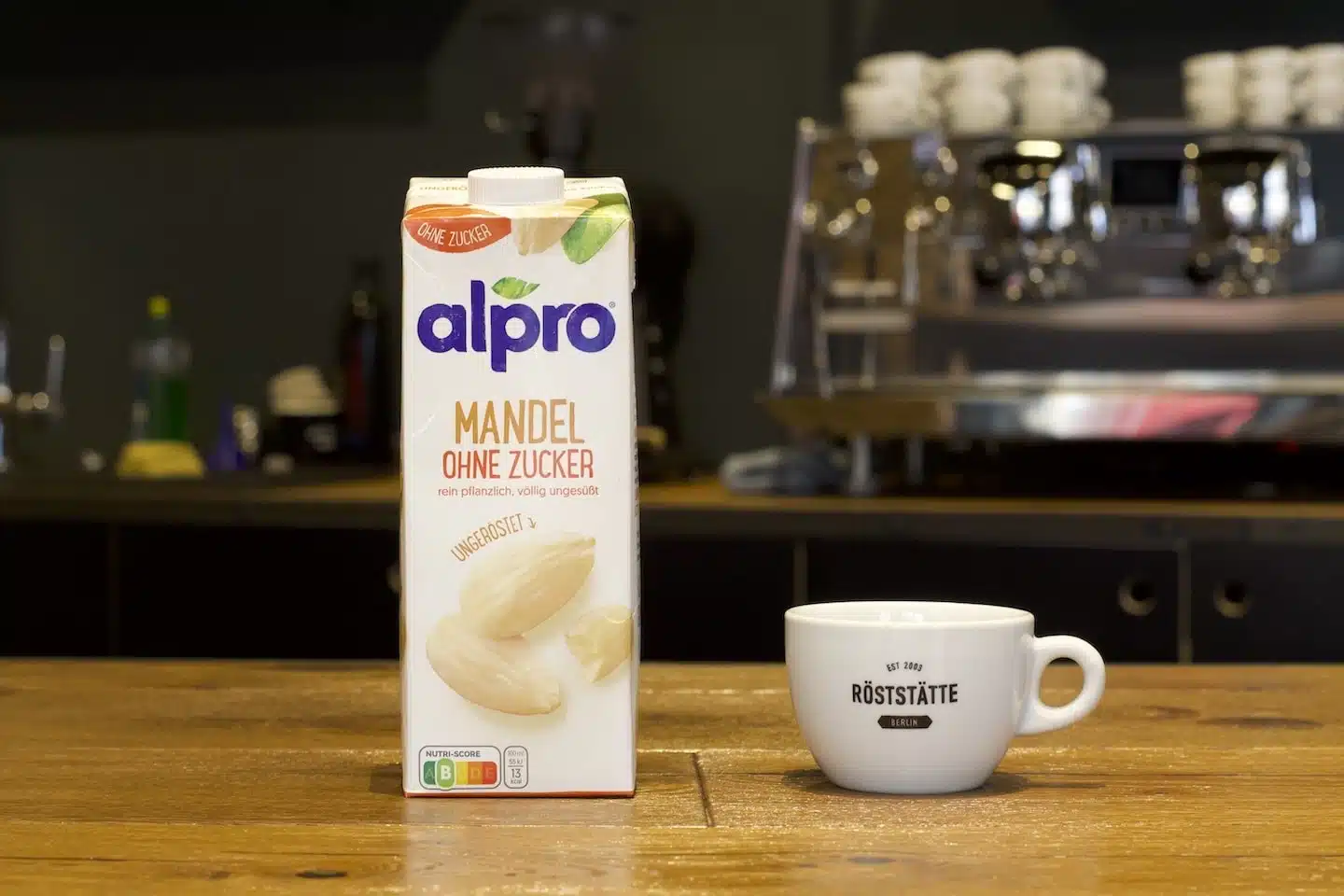
The almond milk
Starting with the almond milk, the very present taste is noticeable, which strongly drowns out the taste of the coffee. We're not talking about a classic almond flavour here, but rather something sharper, like you might know from amaretto. So if you like exactly this taste, you will like almond milk in your coffee. Personally, we don't like the taste of almond milk in coffee. You can't really taste the coffee and there is no harmonious interplay between the two components.
Foaming the almond milk turned out to be rather difficult. When foaming, a relatively heterogeneous mass forms. The foam is neither silky nor creamy and settles relatively quickly on top. The result is two layers - thick milk foam and watery coffee. Due to these factors, the almond milk scores poorly to badly in our test and takes last place together with another milk.
Test result: 7.5 out of 20 points
Foaming the almond milk turned out to be rather difficult. When foaming, a relatively heterogeneous mass forms. The foam is neither silky nor creamy and settles relatively quickly on top. The result is two layers - thick milk foam and watery coffee. Due to these factors, the almond milk scores poorly to badly in our test and takes last place together with another milk.
Test result: 7.5 out of 20 points
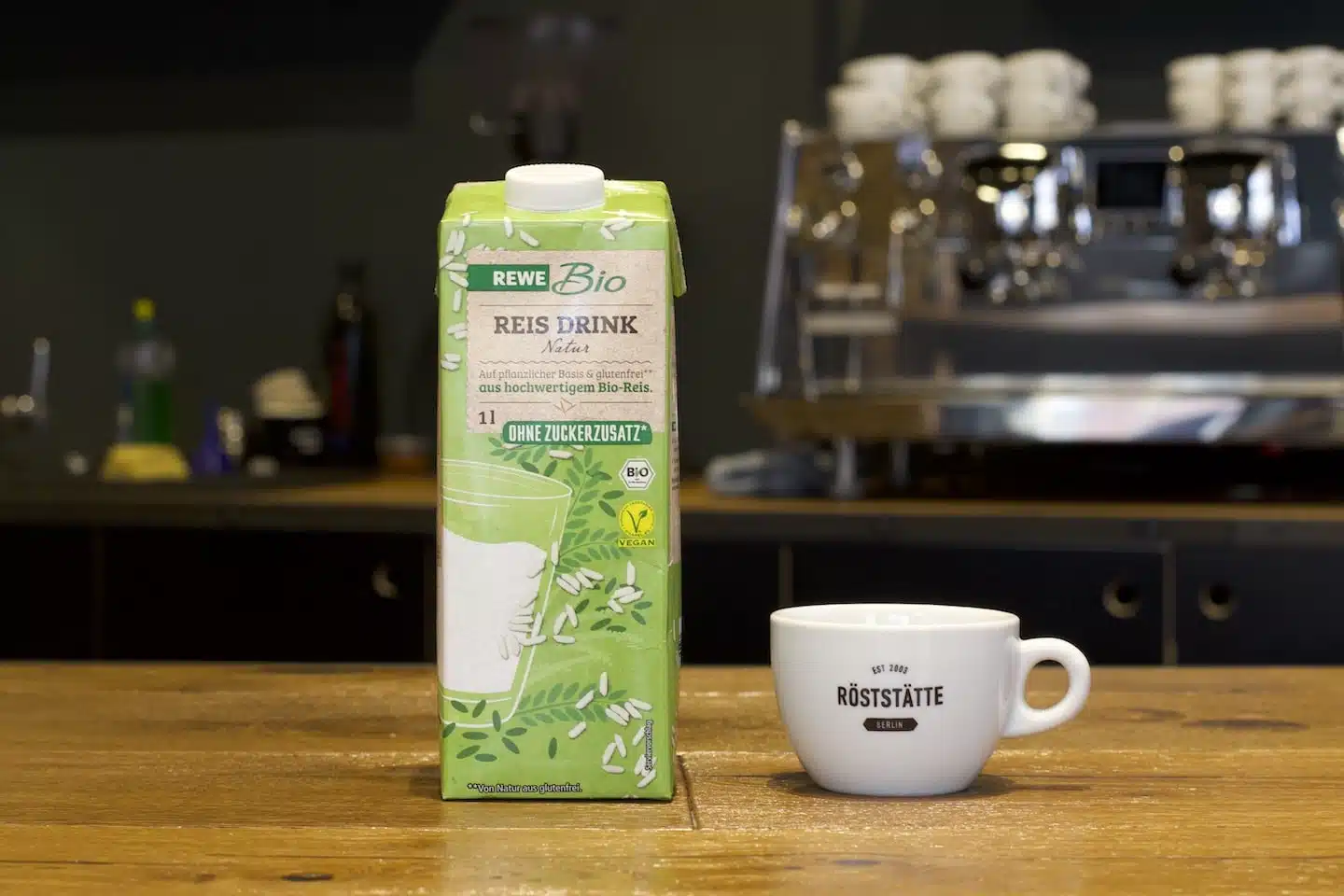
The rice milk
Similar to the almond milk, the rice milk also performs well. The drink has a relatively neutral taste and the coffee flavour comes out reasonably well. The typical caramel notes of the espresso used can be tasted well and the coffee-milk ratio fits. Except for a slight "rice" taste in the coffee, it tastes relatively good to us.
A major weakness of the rice milk, however, is its consistency. The rice alternative is very watery and does not foam well. Due to the watery consistency, the coffee lacks the pleasant, creamy drinking sensation even after foaming. Conclusion: The rice milk tastes OK, but for us it is not a real alternative for cappuccino or other coffee-milk drinks. It is difficult to foam and the overall drinking experience is not pleasant.
Test result: 7.5 out of 20 points
A major weakness of the rice milk, however, is its consistency. The rice alternative is very watery and does not foam well. Due to the watery consistency, the coffee lacks the pleasant, creamy drinking sensation even after foaming. Conclusion: The rice milk tastes OK, but for us it is not a real alternative for cappuccino or other coffee-milk drinks. It is difficult to foam and the overall drinking experience is not pleasant.
Test result: 7.5 out of 20 points
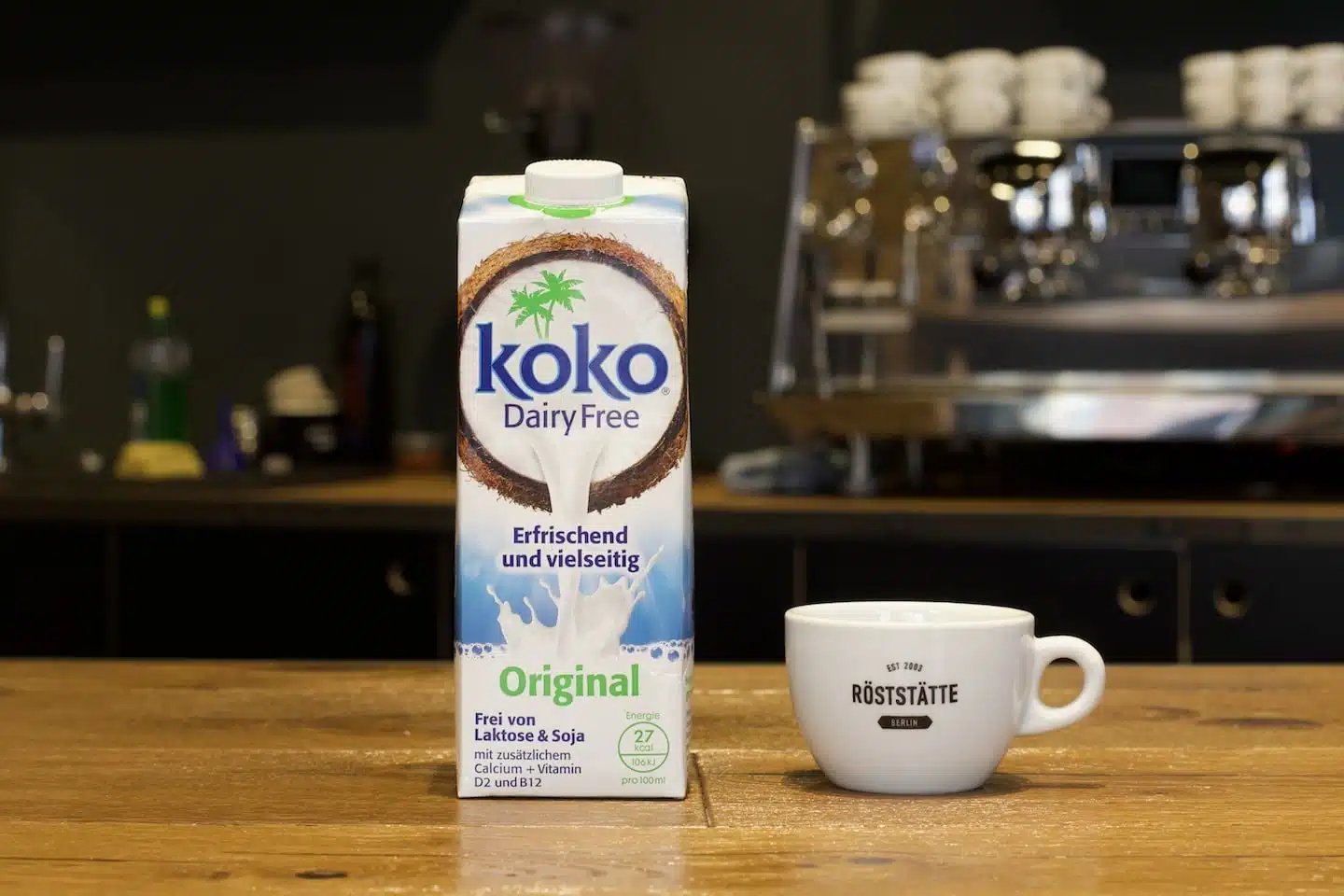
The coconut milk
Next, we took a closer look at coconut milk. The coconut's own flavour stands out very intensely, similar to the behaviour of almond milk. Unfortunately at the expense of the coffee taste. The coconut milk tastes very perfumed and leaves an unpleasant aftertaste in the mouth.
On the other hand, the coconut milk is convincing when it comes to foamability. It is relatively easy to froth and forms a micro-foam that is slightly silky and creates a pleasant mouthfeel. The consistency of the foamed milk could be even silkier, but due to the high amount of saturated fats in the coconut milk, you get that typical feeling of a creamy milk drink.
Test result: 8 out of 20 points
On the other hand, the coconut milk is convincing when it comes to foamability. It is relatively easy to froth and forms a micro-foam that is slightly silky and creates a pleasant mouthfeel. The consistency of the foamed milk could be even silkier, but due to the high amount of saturated fats in the coconut milk, you get that typical feeling of a creamy milk drink.
Test result: 8 out of 20 points
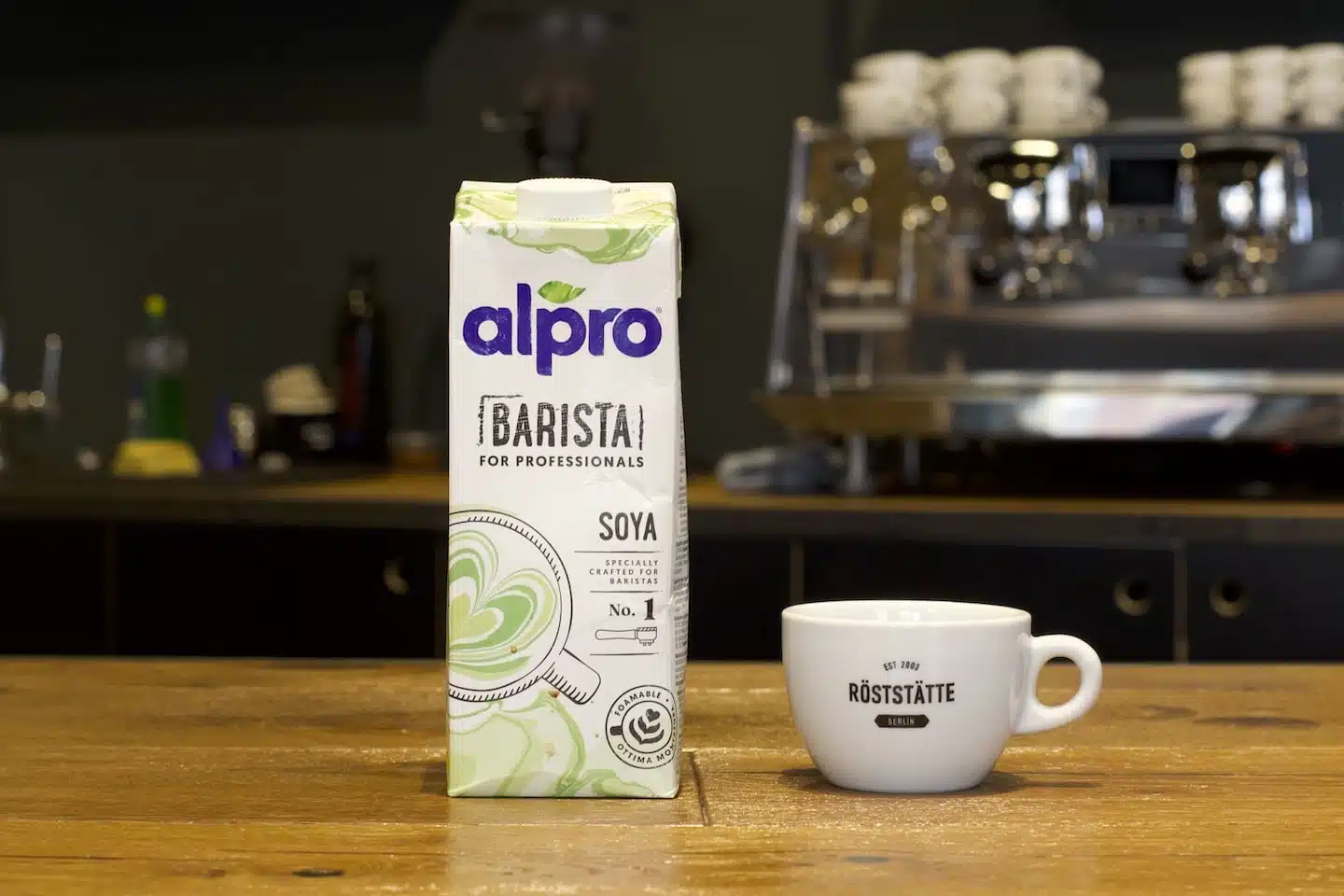
The soy milk
Arriving at the top 3 of our test, we start with one of the most popular milk alternatives in the coffee scene: soy milk.
In our categories, soy milk definitely performs well. Soy and coffee harmonise well with each other in terms of taste. Both the coffee flavour and the soy note can be tasted in the cappuccino.
The consistency of the foamed soy milk is very creamy, but it takes a little more practice to make good latte art with soy. When foamed, it forms many bubbles relatively quickly, which have to be mixed well together. You run the risk of the mixture quickly becoming too foamy. With a little practice and skill, however, you quickly get good results.
Test result: 12 out of 20 points
In our categories, soy milk definitely performs well. Soy and coffee harmonise well with each other in terms of taste. Both the coffee flavour and the soy note can be tasted in the cappuccino.
The consistency of the foamed soy milk is very creamy, but it takes a little more practice to make good latte art with soy. When foamed, it forms many bubbles relatively quickly, which have to be mixed well together. You run the risk of the mixture quickly becoming too foamy. With a little practice and skill, however, you quickly get good results.
Test result: 12 out of 20 points
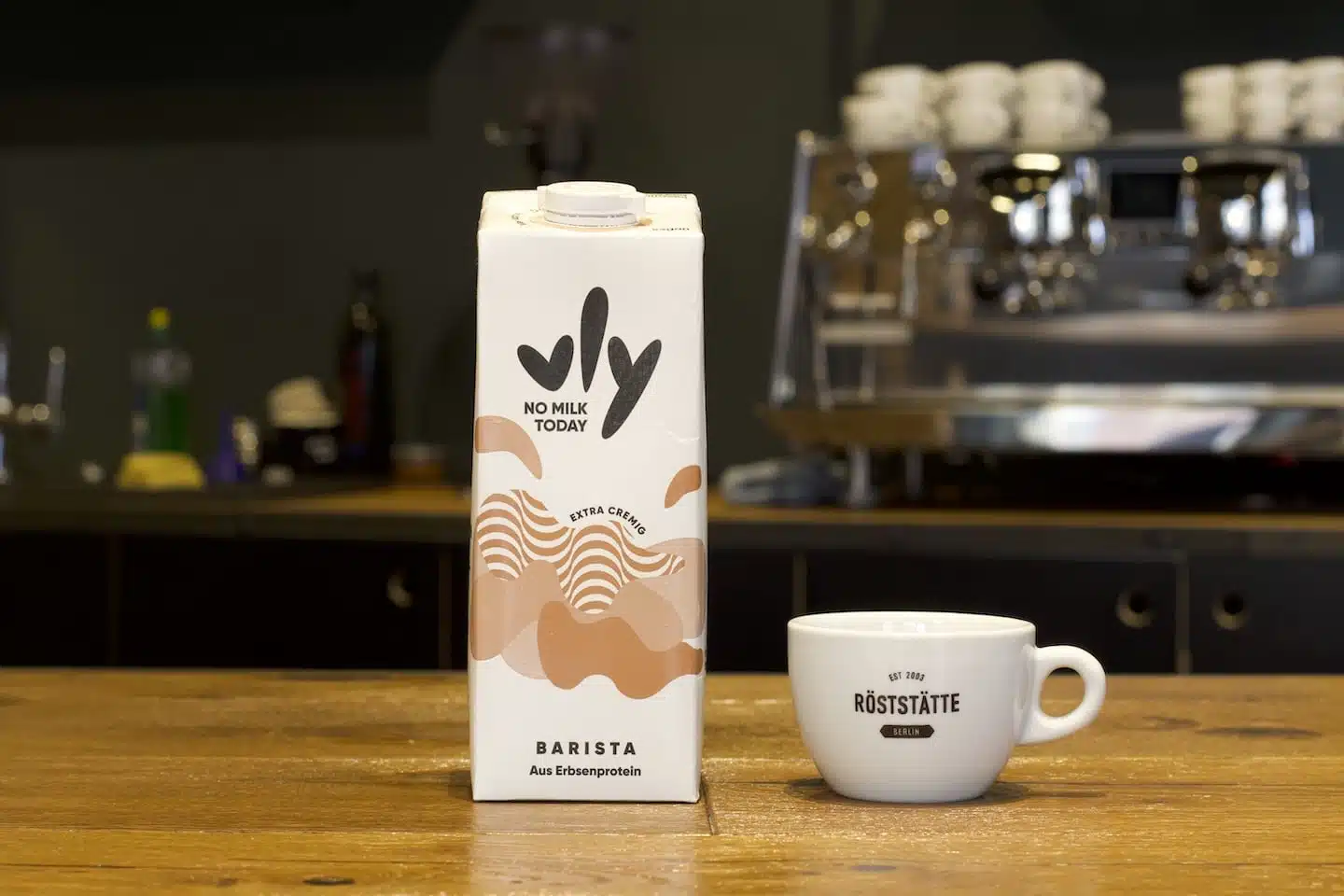
The pea milk
In second place is a real newcomer among the milk alternatives - pea milk! Made from pea proteins, this milk surprised us positively, even thrilled us a little! It scored above average in all categories, with a big plus in the "frothability" category.
The milk is very easy to froth and does not dissolve immediately. You get a very homogeneous, silky mass that blends well with the taste of the coffee. The taste of the pea milk is very distinctive and leaves a slightly dry note in the mouth, but we do not find this very dramatic. The tasting notes of the Arabica coffee we use can be clearly tasted.
So just give it a try. Thumbs up for the pea milk!
Pea milk is also particularly suitable for allergy sufferers, as pea milk - unlike many other plant-based drinks - is free of soy, gluten, nuts and other allergens.
Test result: 14 out of 20 points
The milk is very easy to froth and does not dissolve immediately. You get a very homogeneous, silky mass that blends well with the taste of the coffee. The taste of the pea milk is very distinctive and leaves a slightly dry note in the mouth, but we do not find this very dramatic. The tasting notes of the Arabica coffee we use can be clearly tasted.
So just give it a try. Thumbs up for the pea milk!
Pea milk is also particularly suitable for allergy sufferers, as pea milk - unlike many other plant-based drinks - is free of soy, gluten, nuts and other allergens.
Test result: 14 out of 20 points
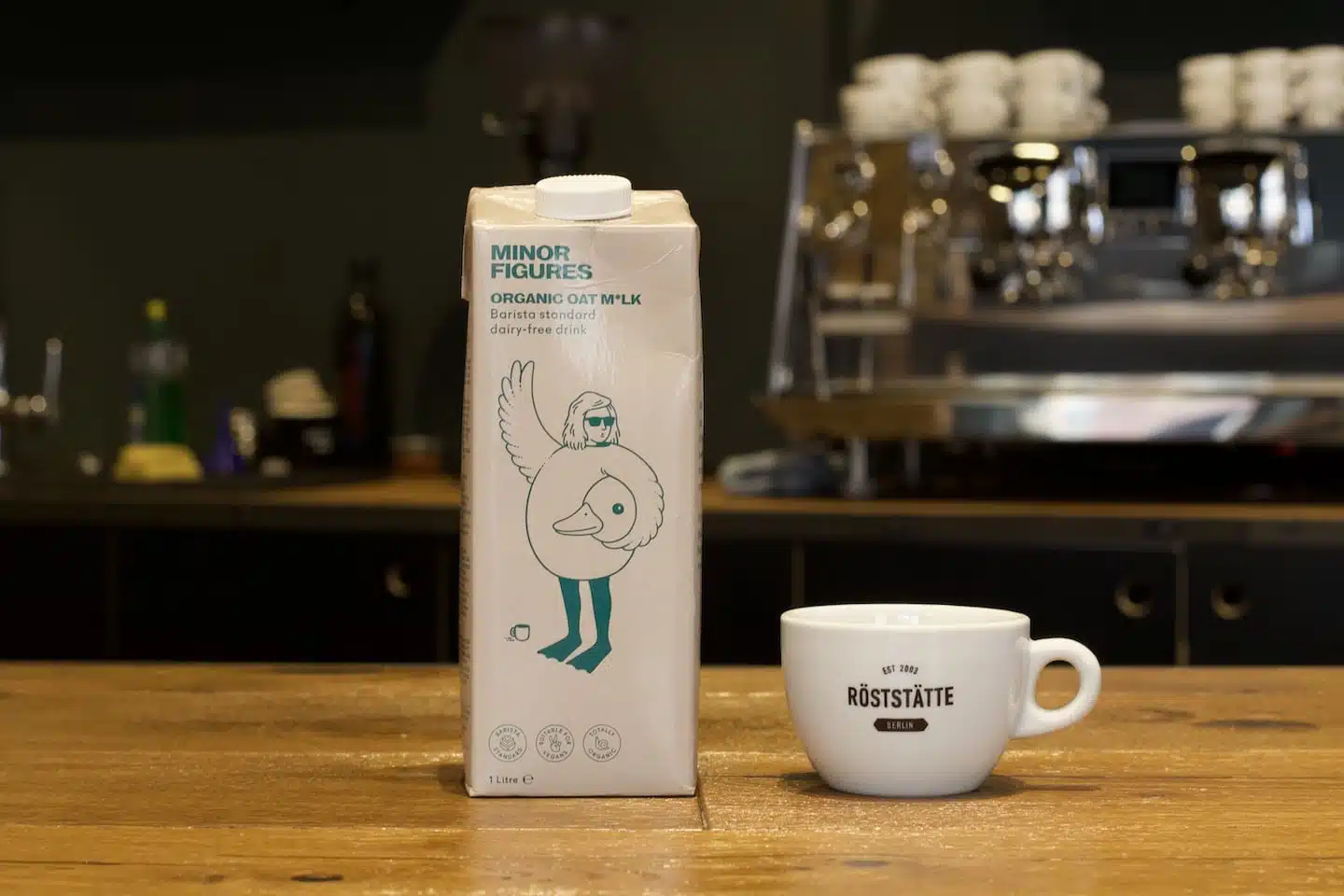
The oat milk
The winner of our big "milk alternatives" test has been decided. Perhaps not surprisingly, oat milk won. In almost all categories, oat milk achieved a high overall score.
It is super easy to froth, becomes silky smooth and leaves a creamy feeling in the mouth. The coffee flavour comes out wonderfully and is even accentuated. Especially with the oat milk we trust, Minor Figures from the UK, the coffee tastes particularly delicious. Minor Figures has developed its oat milk especially for coffee drinks to emphasise the acidity of the coffee. Prepared as a cappuccino, our Santiago showed its full potential, very nice notes of milk chocolate, creamy caramel and cocoa.
Not only Minor Figures, but also other oat milk producers have managed to establish oat milk as a permanent fixture in the catering industry but now also in retail. Oat milk not only tastes delicious, but also has a positive impact on the environment.
Our test winner receives a total of 17.5 out of 20 points!
Please note that oat milk contains gluten and is therefore not suitable for people who want or need to follow a gluten-free diet!
It is super easy to froth, becomes silky smooth and leaves a creamy feeling in the mouth. The coffee flavour comes out wonderfully and is even accentuated. Especially with the oat milk we trust, Minor Figures from the UK, the coffee tastes particularly delicious. Minor Figures has developed its oat milk especially for coffee drinks to emphasise the acidity of the coffee. Prepared as a cappuccino, our Santiago showed its full potential, very nice notes of milk chocolate, creamy caramel and cocoa.
Not only Minor Figures, but also other oat milk producers have managed to establish oat milk as a permanent fixture in the catering industry but now also in retail. Oat milk not only tastes delicious, but also has a positive impact on the environment.
Our test winner receives a total of 17.5 out of 20 points!
Please note that oat milk contains gluten and is therefore not suitable for people who want or need to follow a gluten-free diet!
Zurück zur Übersicht


Wir schenken Dir 5€
auf Deine nächste
Kaffee Bestellung
Gutscheincode anwendbar auf alle Kaffeprodukte. Mit der Anmeldung erklärst Du dich damit einverstanden, E-mail Marketing zu erhalten. Datenschutz
Check Dein Postfach !
Wir haben Dir soeben eine Mail mit einem
Bestätigungslink an Deine angegebene
E-Mail-Adresse geschickt.


